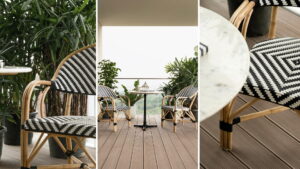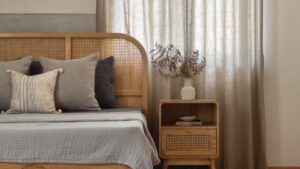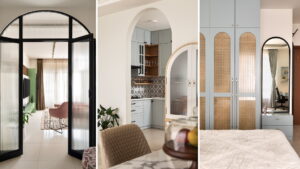In a world that’s becoming increasingly urbanized and detached from nature, there’s a growing desire to bring the outdoors inside our living spaces. This is where biophilic interior design comes into play. Biophilic design is more than just a trend; it’s a concept that focuses on reconnecting people with nature by incorporating natural elements into interior spaces. In this blog, we’ll explore the principles of biophilic interior design and provide you with tips on how to bring the beauty of nature into your home, whether you’re looking to transform your entire living space or simply seeking Bedroom Interior Designers with a biophilic touch.
Understanding Biophilic Interior Design
Biophilic design is a design concept that draws inspiration from the natural world. It’s rooted in the idea that humans have an innate connection to nature and thrive when they are in close proximity to it. The word “biophilia” itself means love of life or living things. Biophilic interior design seeks to create environments that enhance well-being, reduce stress, and promote creativity and productivity by bringing elements of nature into the indoor space.
Key Principles of Biophilic Interior Design
Natural Light: Maximizing natural light is a fundamental aspect of biophilic design. Large windows, skylights, and strategically placed mirrors can help flood your living spaces with daylight, reducing the need for artificial lighting.
Indoor Plants: Incorporating interior plants is perhaps the most recognizable element of biophilic design. Houseplants not only improve air quality but also bring a sense of tranquility and beauty to your home.
Natural Materials: Choose natural materials like wood, stone, and bamboo for furniture and decor. These materials evoke a connection to the earth and create a warm, inviting atmosphere.
Water Features: If space allows, consider adding water features like fountains, indoor ponds, or even a small aquarium. The soothing sound of flowing water can mimic the tranquility of a natural environment.
Biomorphic Shapes: Incorporate elements with organic, flowing shapes and patterns. These can be found in furniture, textiles, and even architectural details.
Colors Inspired by Nature: Select color palettes inspired by nature, such as earthy tones, greens, blues, and muted shades. These colors have a calming effect and help create a harmonious atmosphere.
Nature-Inspired Art and Decor: Hang nature-themed artwork, photographs of natural landscapes, or sculptures that mimic organic forms. These pieces can serve as focal points and reinforce the biophilic theme.
Bringing Biophilic Design into Your Home
Now that you have a basic understanding of biophilic design principles, let’s explore how you can incorporate them into your home, whether you’re looking for modern interior designs for homes or seeking to transform your bedroom with a touch of biophilia.
1. Choose the Right Plants
Houseplants are the stars of biophilic interior design. Select a variety of indoor plants that suit your space and lifestyle. Low-maintenance options like snake plants, pothos, and succulents are perfect for beginners. For larger spaces, consider adding a statement plant like a fiddle leaf fig or a monstera. Hanging plants and wall-mounted planters can also add a touch of greenery to vertical spaces.
2. Create Natural Light-Filled Spaces
To maximize natural light, consider the following:
Skylights: If feasible, install skylights to bring in ample daylight.
Large Windows: Opt for large windows with minimal window treatments to let in as much sunlight as possible.
Mirrors: Strategically place mirrors opposite windows to reflect light and make spaces appear larger and brighter.
3. Incorporate Natural Materials
Choose furniture and decor made from natural materials like wood, stone, jute, and bamboo. Wooden furniture, in particular, adds warmth and character to your home. Consider wooden coffee tables, dining tables, and shelving units. You can also incorporate natural materials through rugs, cushions, and throws.
4. Water Features and Aquariums
If you have the space and inclination, consider adding a water feature or a small indoor pond to your living room. The sound of flowing water can create a serene ambiance. Alternatively, a well-maintained aquarium can be a captivating focal point, bringing aquatic life into your home.
5. Embrace Nature-Inspired Art
Look for artwork and decor that showcases nature. Paintings of landscapes, botanical prints, or sculptures inspired by natural forms can bring the essence of the outdoors into your home. These pieces can serve as conversation starters and add personality to your space.
6. Nature-Themed Color Palette
When choosing colors for your interior, draw inspiration from nature. Earthy tones like greens, browns, and blues can evoke a sense of calm and connection to the natural world. Use these colors for walls, furniture, and decor accents.
7. Work with Bedroom Interior Designers
If you’re particularly interested in Incorporating Biophilic Interior Design into your bedroom, consider collaborating with experienced bedroom interior designers. They can help you tailor the concept to create a tranquil and restful sleeping environment. Elements like natural bedding, soft lighting, and soothing color schemes can be expertly integrated into your bedroom’s design.
In conclusion, biophilic interior design offers a transformative way to connect with nature in our increasingly urbanized lives. By incorporating natural elements, colors, and textures into your home, you can create a space that not only looks stunning but also promotes well-being and harmony. Whether you’re seeking modern interior designs for your entire home or bedroom-specific biophilic touches, embracing biophilia can make your living spaces more inviting, peaceful, and in tune with the beauty of the natural world.



